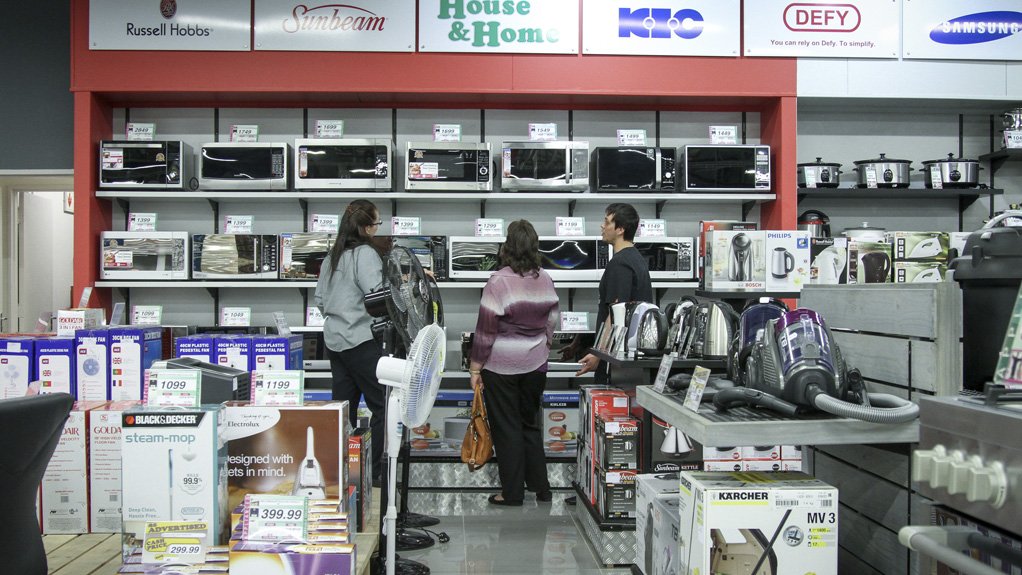With all common household electronic appliances now required to display new energy efficiency labelling, the National Regulator for Compulsory Specifications (NRCS) is confident that there will be a marked improvement in energy use and cost savings in South Africa, says NRCS communications and marketing head Mirriam Moswaane.
She notes that the NRCS has historically regulated compact fluorescent lamps and incandescent lamps, ensuring that the two lighting technologies are safe for use and that they meet the minimum energy performance standards as set in the relevant technical regulations.
However, in the 2015/16 period, the regulatory scope of the NRCS expanded to include the energy efficiency of many household electrical and electronic appliances, following the promulgation of the new energy efficiency labelling compulsory specification, VC 9008, in November 2014.
The new labelling guideline was introduced under the Standards and Labelling (S&L) project initiated by the Department of Energy in collaboration with the Department of Trade and Industry, the global Environment Facility and the United Nations Development Programme.
Moswaane explains that the broader S&L project aims to eliminate household appliances that use energy inefficiently and encourage their replacement with new technologies that can help to reduce electricity demand in the residential sector. In line with this, mandatory Minimum Energy Performance Standards (MEPS) were devised to set the minimum energy levels that appliances must meet to be sold in South Africa and the labelling of products was updated to inform end-users of the energy performance of the appliances.
The appliances covered by the new regulations include audio and visual equipment – such as televisions and set-top boxes – refrigerators and freezers, electric ovens, washing machines, washer dryer combinations, tumble dryers, dishwashers, air conditioners and geysers.
The enforcement of the new labelling standards has been implemented in phases, with the last phase – pertaining to the labelling of air conditioners – enforced in May this year.
The New Label
The new energy efficiency label is designed to provide South African consumers with accurate and comparable information about household appliances by featuring an energy efficiency rating, as well as the name of the manufacturer and the product model, Moswaane explains. For some appliances, the label will also have nonenergy data such as water consumption per cycle and appliance noise level.
All labels display seven horizontal bars, ranging in colour from dark green at the top to dark red at the bottom. Each colour-coded bar reflects an energy efficiency threshold for a particular appliance, with the most energy efficient appliances placed on the dark green bar and the least energy efficient on the red bar. The actual energy efficiency class of each appliance is, moreover, indicated by a letter, with the range of letters corresponding to those delineated by the South African Bureau of Standards for each appliance. Energy grades will, thus, vary from A+++ to D, A++ to E, A+ to F and A to G, depending on the product.
The appliances’ energy consumption is further reported in either kWh/y – for appliances that are operational throughout the year, such as refrigerators and storage water heaters – and in kWh/cycle for occasional appliances such as washing machines and dishwashers.
“The colour-coded bars help consumers to see at a glance how well the appliance performs in terms of energy efficiency. “As awareness grows for the need to use energy wisely and reduce energy costs wherever possible, we are confident that this labelling system will help to guide a smooth path to improved energy use in South African homes.”
Supplier Obligation
Household appliance manufacturers are required to supply the label with each product, as well as publish it in product brochures and other literature pertaining to the product. Dealers are required to affix the label in a visible position on the appliance and ensure that the information it contains is disclosed in any advertising or promotional materials.
An application for approval of each type of appliance intended for sale must be made to the NRCS. To prevent a large number of incomplete or “hanging” projects persisting for extended periods, applicants will be granted 30 days to take corrective action for any queries raised during the application.
Noncompliant products are dealt with in terms of Section 15 (1) and (3) of the NRCS Act. The sanctions available under the Act include recalling the products from the market, confiscating the batch of products concerned, destruction of the products, and returning the products to the country of origin or dealing with them in a way that the Accounting Authority of the NRCS sees fit.
Edited by: Zandile Mavuso
Creamer Media Senior Deputy Editor: Features
EMAIL THIS ARTICLE SAVE THIS ARTICLE
ARTICLE ENQUIRY
To subscribe email subscriptions@creamermedia.co.za or click here
To advertise email advertising@creamermedia.co.za or click here













